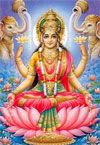

A Diwali Diya is a small earthen lamp that is lit especially at Diwali. They are usually made of clay. Ghee or oil is used as the fuel and cotton wool as the wick. Sometimes they are made by part filling a glass with colored water, Ghee is floated on top, and again cotton wool used as a wick. Children could make there own Diya with air dried clay or play dough. For safety reason these diyas should not be lit with Ghee and cotton wool.
Beautifully crafted diyas beckon attention of the buyers. The earthen diya used on the occasion of Diwali, reflects ancient design sense that is simple and stunning in concept and universal in appeal. The Diwali season sees a proliferation of clay creativity ranging from roadside agals to designer diyas displayed in art and craft boutiques.
During Diwali, various shops showcases brilliant diwali diyas and lamps crafted by ceramic designers from all over the country. There are also diyas with zari and mirror in exuberant colours. Delightfully, imaginative diyas with sharply cut edges, embellished with cut work are covered and filled with bright coloured wax.
Mirror work and zari embellished deep, traditional diyas as well as those embellished with fragrant dried flowers, Ganesha and Lakshmi diyas with 21 or 11 spouts, diyas shaped like China leaves and shaded roses, tiny Parvati Ganesha lamps and many other design vie for attention. Made out of clay, the diyas in vivid shades of yellow, blue, pink, gold and silver are well crafted.

